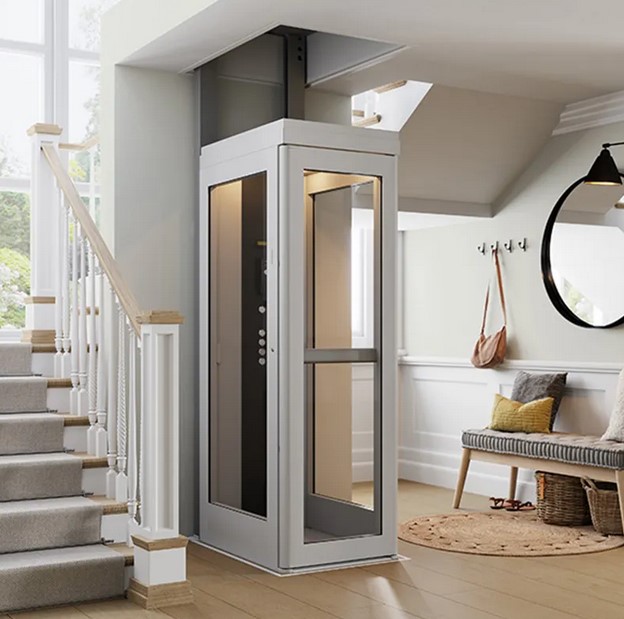London Lift Company: Giving Comprehensive Lift Solutions Throughout the Funding
London Lift Company: Giving Comprehensive Lift Solutions Throughout the Funding
Blog Article
Digging Into the World of Elevators: Typical Concerns Encountered by Different Lift Mechanisms
As we navigate via the vertical transportation systems of modern structures, lifts stand out as a crucial component of our daily lives. From hydraulic lifts to grip systems and machine-room-less designs, each lift kind comes with its collection of common problems.
Hydraulic Lifts
Hydraulic lifts, typically liked for low-rise buildings, use fluid stress to regulate the movement of the elevator auto (lift repair companies). This mechanism entails a hydraulic pump pushing oil into a cylinder, creating the lift to relocate the preferred direction. While hydraulic lifts are recognized for their quiet and smooth operation, they do include their very own collection of common concerns
One common issue with hydraulic lifts is oil leak. In addition, issues with the control system, such as faulty shutoffs or a malfunctioning pump, can trigger interruptions in the elevator's movement.
Regular maintenance and punctual repairs are necessary to guarantee the smooth functioning of hydraulic elevators. By addressing these common problems proactively, structure owners can minimize downtime and ensure the safety and performance of their upright transport system.
Traction Lifts
When thinking about vertical transportation systems in structures, an additional typical type besides hydraulic lifts is the grip elevator. Traction lifts operate using a system of ropes and weights that move the elevator car by grasping onto the hoist ropes. This system enables for smoother and faster upright transport compared to hydraulic systems.
One of the common issues faced by grip elevators is rope wear. The consistent motion of the ropes within the traction system can cause tear and wear over time, possibly triggering the lift to breakdown or become unsafe for usage. Regular examinations and maintenance of the ropes are essential to make certain the lift's proper functioning and safety and security.
An additional problem that traction lifts might come across is related to the control system. Issues with the control system can lead to problems such as unpredictable activity, delays in feedback times, or even full shutdowns. Routine screening and maintenance of the control system are crucial to stop such issues and make sure the lift's reliability.
Machine-Room-Less (MRL) Lifts

Among the essential components of MRL elevators is the portable gearless lift companies in London grip machine that is mounted within the hoistway. This equipment successfully drives the elevator vehicle without the need for large tools located in standard traction lifts. Furthermore, MRL elevators typically make use of a counterweight system to balance the vehicle, further improving their energy performance.
In spite of their benefits, MRL elevators might face obstacles associated with repair and maintenance because of the constrained space for devices installation. Access for servicing components within the shaft can be restricted, calling for specialized training for specialists. Correct maintenance schedules and routine examinations are important to ensure the continued smooth operation of MRL lifts.
Overloading and Weight Restriction Issues
Are elevators geared up to manage excess weight lots efficiently and safely? Overwhelming and weight restriction issues are vital worries in lift procedures. Lift manufacturers design lifts with certain weight abilities to ensure passenger safety and devices durability. Surpassing these weight limitations can bring about numerous troubles, consisting of mechanical disabled platform lifts prices uk failings, hold-ups, and safety and security hazards.
When elevators are overwhelmed, it puts too much pressure on the electric motor, cords, and various other parts, potentially causing breakdowns or malfunctions. If they detect excess weight, safety devices such as sensing units and overload sensing units are in place to prevent elevators from moving. In addition, surpassing weight limits can lead to increased power consumption and deterioration on the elevator system.
To minimize overwhelming problems, developing managers ought to plainly display weight restrictions in elevators and educate owners on the significance of adhering to these restrictions - lift repair companies. Regular upkeep checks by certified professionals can likewise help make certain that elevators are running within safe weight criteria. By dealing with overloading and weight restriction problems proactively, building proprietors can enhance lift safety and effectiveness
Electric System Failures
Exceeding weight limitations in elevators can not only lead to mechanical issues yet additionally potentially contribute to electrical system failings within the lift facilities. Electrical system failures are an important issue in elevator procedure, as they can create unforeseen shutdowns, breakdowns, or even safety and security risks.
Normal upkeep and evaluations are important to identify and deal with prospective electrical issues without delay, guaranteeing the risk-free and efficient operation of elevator systems. By adhering to weight limits and carrying out routine electrical system checks, building proprietors can alleviate the threat of electric failures in elevators.
Verdict

Hydraulic elevators, usually favored for low-rise structures, use fluid stress to manage the activity of the lift auto.When thinking about vertical transportation systems in buildings, another usual kind apart from hydraulic lifts is the traction lift. Grip lifts operate using a system of ropes and weights that relocate the elevator cars and truck by gripping onto the hoist ropes. Unlike conventional elevators that call for a different equipment space to house the tools, MRL lifts incorporate many of the parts within the shaft, removing the need for a specialized maker area.In conclusion, lifts deal with common problems such as hydraulic malfunctions, traction system failings, and electrical system problems.
Report this page